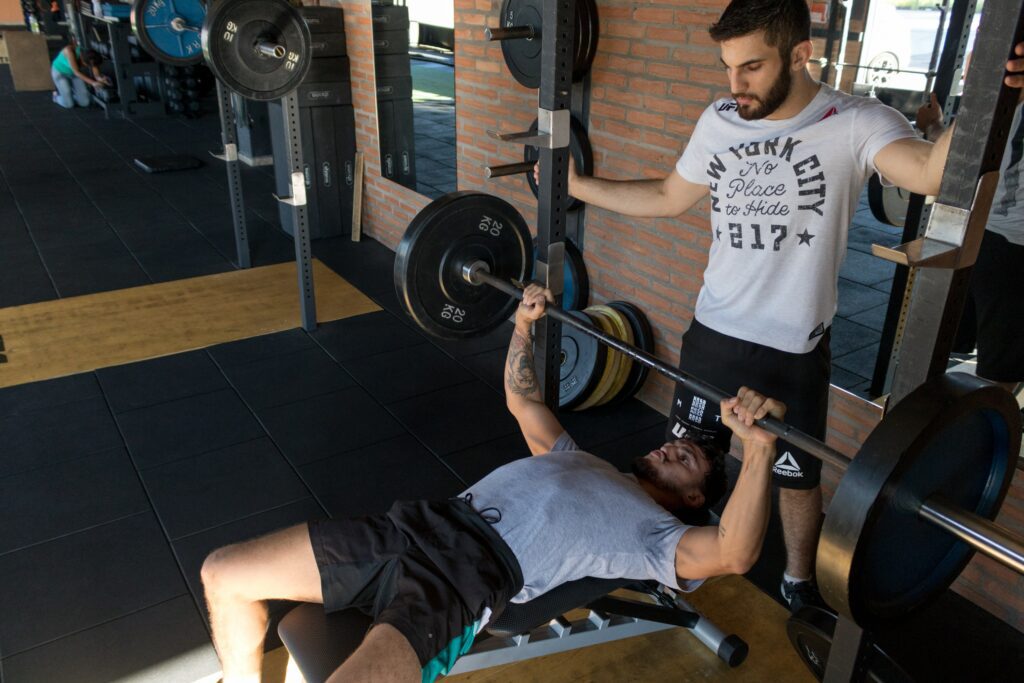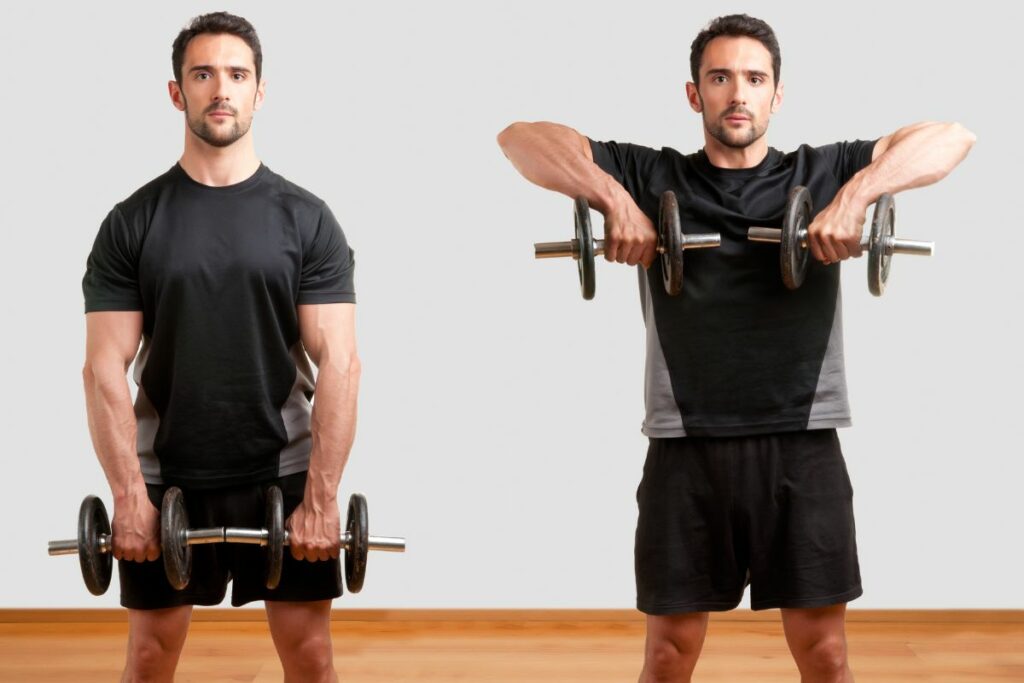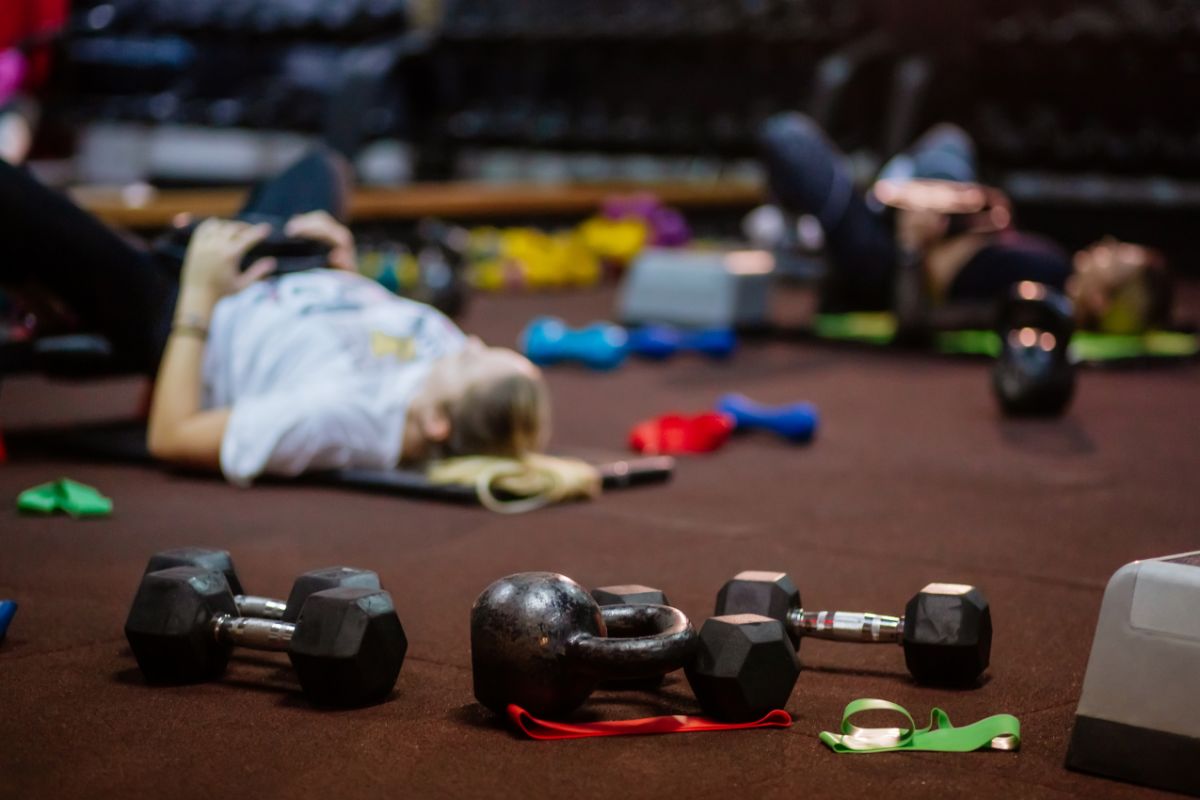Last Updated on December 6, 2022 by TJ Daniels, Certified Personal Trainer
Sets and reps are just two examples of the vernacular used in the fitness world.
In addition to this, there are a lot of other terms thrown around which can make any beginner feel out of their league.


Therefore, in this guide, we will talk about how many sets and reps you should do depending on the reasons why you are working out.
It is also good to keep in mind that this is only a guideline, and you have full freedom to cater your workout to suit your needs and meet your limits – just make sure that you are carrying out the exercises properly to avoid injury.
What Are Sets?
Sets are simply a collection of reps. You can do a single set of reps for a given exercise or multiple sets.
Multiple sets are more common, especially if you want to improve your muscular endurance or strength.
For example, if you want to build muscle in your chest, you could perform three sets of ten repetitions of a chest press.
That is, you perform 10 repetitions of the chest press and then rest briefly.
Then you do another 10 reps before taking another short break.
The final ten repetitions are completed before taking a brief break and moving on to the next exercise.
We will address later the question of “How many sets should I do?” to maximize your workout routine.


What Are Reps?
The term “rep” refers to repetition in the gym. It is one instance of a single exercise.
For example, if you completed one push-up, you finished one “rep” of a push-up. If you lifted the bar (with proper form) ten times on the bench press, you completed 10 reps.
The number of sets and reps that you target during each workout session is going to be contingent upon the results you are trying to achieve. That is why it is important to understand your fitness goals before beginning any particular exercise.
For example, are you trying to build muscle mass, lose weight, build muscular endurance, or work on a specific muscle group? Or are you looking to build lean muscle or muscular strength? Or are you more into endurance training and prefer full-body workouts?
All of these questions, and a few more, will determine exactly how many sets and reps you will want to shoot for.


Sets And Reps For Muscle Size
Muscle hypertrophy, or muscle size, differs from strength in that it focuses on increasing muscle mass.
However, the majority of people who are not pro athletes or bodybuilders will benefit from strength workouts in terms of both strength and muscle mass.
Use a set and rep plan of 3 to 6 sets with your number of reps in the 6-12 range, with 30 to 90 seconds of rest between each exercise to build muscle.
Muscle growth and size will be the greatest when you are lifting heavier weights, doing fewer reps, and sticking to larger muscle group exercises like the bench press.
There will also be times when you will want to push yourself to your limits with your one rep max in a given exercise to understand how much weight you can lift and be able to monitor your progress. Just be sure you are always using a spotter.
Rest periods also influence whether you’re primarily focusing on strength or muscle mass — strength requires more rest between exercises to allow the muscles more time to rest so heavier weights can be lifted, compared to muscular hypertrophy.
Remember to consult a personal trainer if you are not familiar with the proper form of an exercise, especially when using heavy weights.


Sets And Reps For Muscle Strength
Strength training focuses on increasing the maximum amount of force a muscle can exert in a single contraction. Similar to weight lifting for training goals that include building muscle, most strength training routines will consist of targeting your larger muscle groups and consist of a moderate rep range while pushing your upper limits of weight.
But how many exercises and how many reps and sets should one be doing for muscular strength?
Since we are targeting the major muscle groups, your rep range should be 6-12 and you should target 3-4 sets of each exercise.
Again, we need to be targeting moderate intensity to begin each specific exercise and work our way up in weight in each of our sets.
Building strength entails breaking down muscle fibers by lifting heavy objects in order for them to repair and regrow stronger.
Furthermore, lifting weights creates new neural connections between your brain and muscles, allowing them to learn how to contract properly when lifting something heavy over time.
This neurological change increases your ability to lift even more.


Sets And Reps For Muscle Endurance
Muscular endurance refers to the ability to maintain an activity or movement for an extended period of time.
It’s essential for sports like running or cycling, where your muscles must exert force repeatedly to sustain you over long distances.
Many daily activities require muscular endurance, such as sitting at a desk with proper posture, which requires the long-term engagement of your abdominals and upper back.
Lifting light loads for 2 to 3 sets of 12 or more reps is recommended for muscular endurance. Isolation exercises are also great to add to your workout routine.
Rest periods should be no longer than 30 seconds as the shorter break will not only increase your endurance but also help you burn fat.
By lowering your weight and prolonging the time the muscles are under tension, you train them to hold up over time, rather than having the ability to move a lot of weight in one big push and then rest.


Sets And Reps For Muscle Power
Muscular power is defined as the ability to generate a lot of force in a short amount of time.
Consider the following exercises: box jumps and power cleans. Anything involving a quick high-intensity movement.
Muscular power is especially important in sports like football, sprinting, and throwing events like shot put and javelin throws.
Power training is still functionally beneficial for those who are not training for a specific sport.
Being able to quickly react and generate force can help you react to situations in everyday life.


Each rep should be extremely difficult, and you should feel as if you can’t do any more than the 1 to 5 reps you set out to do.
Beginners should begin with higher reps and lighter weights, or even with body-weight exercises.
As you gain explosive strength, gradually increase the resistance and the number of reps.
Building A Workout
Once you’ve determined your training objective, use the chart to determine the number of reps and sets you should complete during each workout.
It should also assist you in determining the intensity of your training.
Exercises
The number of exercises you should do per workout depends on your goals and fitness level.
When you first begin, it is reasonable to perform one exercise per muscle group. To ensure that your workout is both safe and effective, use proper form when performing each move.
Aim for 8-10 total sets for each muscle group you are working, for example, chest, with 2-3 sets of 8-12 reps for each exercise.
If you do 3 sets of each exercise, this means it is best to do 3 different exercises during that workout for 3-4 sets each.
If you do 2 sets of each exercise, you would want to do 2 different exercises but 4-5 sets for each exercise.
Remember, if you work the same muscle group twice a week, we want to keep it under 20 sets per muscle group per week.


Frequency
You probably want to know how many times per week you should work out in addition to knowing your sets and reps for each exercise.
The ideal number of training sessions for you may be determined by your lifestyle, goals, and schedule.
When people train each muscle group twice a week, they achieve the best results.
By training each muscle group twice a week, you can work hard and intensely without overtraining in a single workout session.
This training schedule is also beneficial because it can reduce your time commitment to working out while still producing outstanding results.
Structure
There are numerous ways to organize your workout. Of course, you can simply walk through the weight room and complete each exercise as equipment becomes available.
For example, if the dumbbells you need for your shoulder press are unavailable, you can perform lat pulldowns until the weights you require become available.
Circuit training, for example, involves performing each exercise one after the other without rest.
Summary
- How To Start HIIT Workouts [Beginner’s Guide] - May 18, 2023
- How To Sneak A Workout In While Taking Care Of Your Baby - March 17, 2023
- How To Build Your Chest With Dumbbells [Guide] - February 9, 2023








